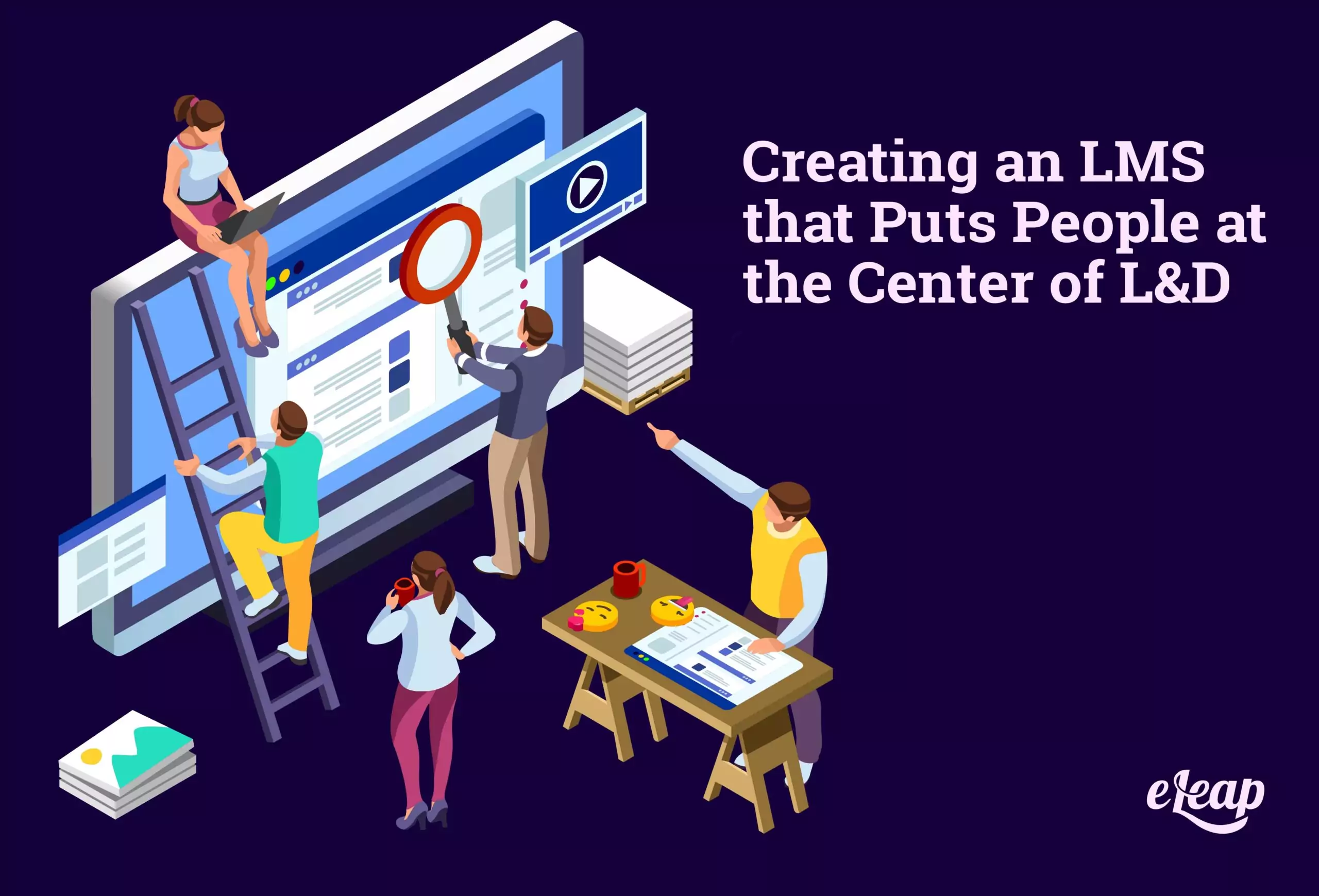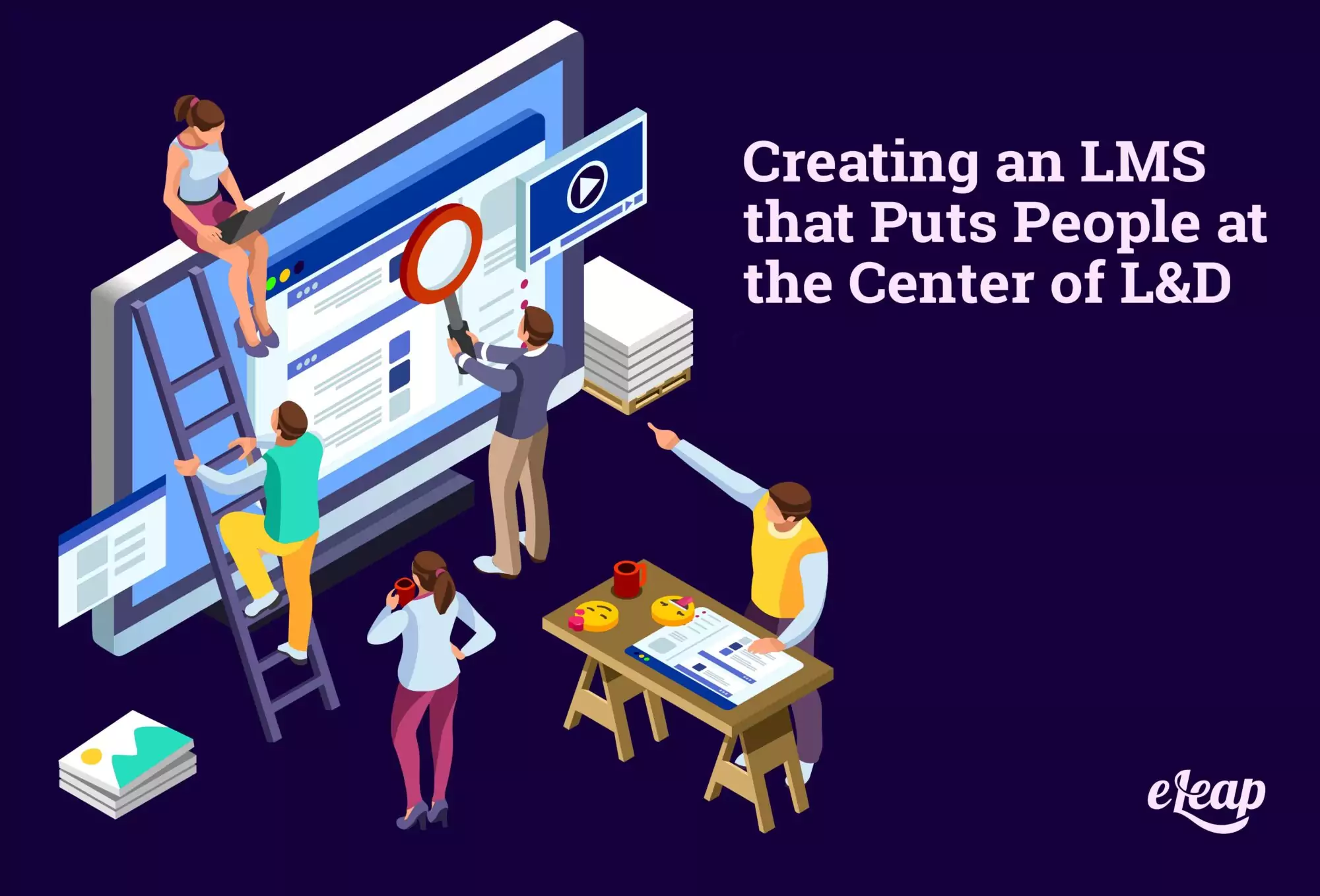Creating an LMS that Puts People at the Center of L&D

Digital transformation and learning and development are much more about the people than the technology involved. After all, you can have the best strategies in place for embracing technology as part of your LMS and other learning and training tools and still not get the results that you anticipate because you didn’t take the time to engage the people and find out what they want and need from L&D. If you want to create a successful learning environment and the perfect digital platform, you have to stop to consider your people in a few different ways.

How do employees prefer to learn?
This is always going to be the first consideration in creating your LMS platform and choosing a strategy for learning and development. Granted, people all learn a little differently, but there are typically a few categories that you can create that will fit everyone in a more general sense.
Hands-on learners are those who learn better by doing than by sitting back and letting someone tell them or show them how to do it.
Self-paced learners will prefer to be given a training module they can complete at their own pace so they aren’t stressed or feel rushed, or perhaps so they can complete it faster than others because they don’t need as much time.
Collaborative learners will be those that learn better in a group setting, such as a traditional training seminar or even a Zoom brainstorming session. These are the kind of learners that organizations are trying to attract because the desire for community or social learning is high, but the skills of collaborative learning can also be taught.
There are plenty of other learning styles and ways that people prefer to absorb information. These three categories cover pretty much all of them, though, so you can use them to group your employees and determine how to approach L&D based on the way they learn best.
Can employees contribute resources or engage in discussions?
If you tell employees that you welcome collaboration but don’t actually provide them with the tools to collaborate, you’re essentially showing them that there is no substance behind your words. You need to give people a place to collaborate and communicate within your LMS, whether that’s a messaging feature or even a peer-developed learning database where people can submit articles and informational posts to share with others in the company.
Employees that feel appreciated and valued will love engaging with others and contributing to the greater good of the organization. If you have a locked-out LMS platform that simply feeds people videos and training modules, you’re not going to get the engagement that you want. If, however, you have a collaborative space that invites employee contributions and engagement, you’re going to be giving your people the tools and solutions they deserve.
Are people able to share knowledge or is training static and isolated?
In sort of the same vein, your employees need to be able to share knowledge and resources. Static, isolated training, or self-paced training that doesn’t encourage teamwork could make people feel like they’re competing against co-workers when it’s really a team effort across the board. Make sure that your LMS is set up to allow for knowledge sharing, from a simple conversation to a resource database, and even self-filmed tutorial videos and more.
There may be a place for isolated training, but it will become more the exception than the rule. Shared knowledge and collaborative, social learning is the future of workplace learning and development, and organizations that get on board now will find their development, engagement, and retention increase a lot sooner.
Are you using a community or social learning structure to build your LMS?
Social learning, also known as community learning by some, is a method that is taking organizations by storm. Today’s employees want to be a part of something, and they want to know that actually means something. With your LMS, you need to incorporate social learning opportunities like an employee resource database, discussion boards, and even a place where people can contribute their own training and learning modules based on their role and expertise.
If you’re just focused on filling your LMS with training courses, you’re not going to get the results that you expect from L&D. Employees don’t want another computer filled with videos and multiple-choice tests. They want dynamic, interactive, social learning and training opportunities that help them learn within the flow of work.
Don’t forget feedback
Of course, what better way to find out what people need or expect in their LMS than to ask them directly? You need to create a culture where feedback is welcome and runs on an ongoing basis. That is, people should never feel like they can’t provide you with insight or information about their own L&D experience or the requirements therein. Ask how the LMS is doing. Find out what people would change or remove. Let them have the final say—after all, they’ll be the ones to know how they learn most effectively.
Creating a feedback culture is a critical part of success for most organizations today. By taking advantage of it and incorporating it in as many areas as possible, you’ll be able to improve your LMS and create the perfect environment of people-centered learning and development. Make feedback a part of everyday conversation. Encourage people to reach out with ideas and suggestions. Let your team lead your LMS in the right direction and you will see much better results.
Conclusion
The people are the future of every organization. No matter how much AI and automation are found, there will still always be a need for humans in several job roles. Therefore, organizations must treat these people well and give them the learning and development resources they need to thrive. When people feel valued and engaged, they respond with motivation, increased loyalty, and a better attitude. Put people first and watch productivity, progress, and profits soar.